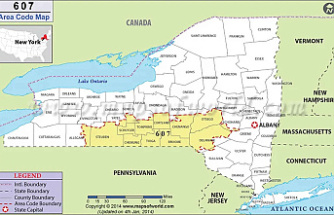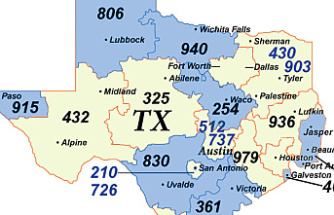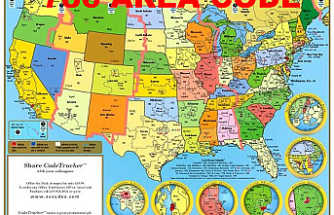On Sept. 11, 2001, with the United States reeling over the World Trade Center terrorist attacks and forced to close its air space, 38 America-bound flights were diverted to Gander, Newfoundland. The town — population 9,651 — dropped everything to host and comfort 6,579 airplane passengers and crew members from all over the world.
Residents invited perfect strangers to sleep in their homes for several days. Previously striking school-bus drivers chauffeured stranded travelers. Pharmacies provided diapers and medication to the passengers, who were allowed to take only their carry-on luggage from the planes.
Their stories are being celebrated in a new Broadway musical, “Come From Away,” opening March 12 at the Gerald Schoenfeld Theatre (now in previews). Here, locals tell the story of the tiny town with a big heart.
Bonnie Earle-Harris spent the days following 9/11 with a special group of international visitors: nine cats, 11 dogs and a pair of endangered apes. The Society for the Prevention of Cruelty to Animals (SPCA) employee crawled into the darkened cargo holds of about a dozen planes, comforting and caring for the terrified pets.
The bonobo apes, on their way from Belgium to zoos in the US, had their own handler. But several of the animals were alone.
“They [seemed] very stressed and frightened,” said Harris, 51. “They were thirsty — they had been on the planes for at least 18 hours.”
At first, authorities were loath to allow the animals off the planes, but by the second day, Earle-Harris and a local vet prevailed, transforming an empty hangar into an ad-hoc menagerie where the animals could stretch and run.
She shrugs off the acclaim, however: “It needed to be done. If it happened tomorrow, we’d do it again.”
Beulah Cooper opened her home — and made true friends.
The retired government worker, now 76, let anyone who needed to shower do so at her home. She made a particular connection with Long Islanders Hannah and Dennis O’Rourke, who awaited news of their son Kevin. A New York City firefighter at Rescue Co. 2 in Crown Heights, Kevin hadn’t been heard from since his company responded to the call at the World Trade Center.
Cooper, whose own son is a firefighter, did her best to lighten the O’Rourkes’ suffering. “I spent a lot of time with them,” she recalled. “We drove around and talked. We talked about the dangers [for our sons], but how it’s what they want to do and you hope for the best.”
Two weeks after the O’Rourkes returned home, Kevin’s body was found in the stairwell rubble of Tower One.
Since then, the families have visited each other several times and speak frequently on the phone. “Hannah never hangs up the phone without saying ‘I love you,’ ” Cooper said. “I do the same with her.”
“I remember realizing we might have as many as 10,000 people arriving,” said Constable Oswald “Oz” Fudge, 62. “We were only a population of 9,000, but I knew that we’d take care of everyone.”
When the police officer learned that several passengers were terminally ill children flying from London to Disney World for their birthdays, he got his daughter and several local teens to create an ersatz Orlando at St. Paul’s Intermediate School.
“My daughter dressed up as [local mascot] Commander Gander [inset]. Three girls from my daughter’s class dressed as fairies. A bakery made a cake for 350 people, and we had balloons and stuffed animals,” Fudge said.
“One of the fathers said, ‘My daughter’s wish was to go to Disney World, but even if we don’t get there, it’s OK. We’ve had such a good time here, she’s not sad.’ ”
Upon finding out that 770 stranded travelers would be camping out at Gander Academy, third-grade teacher Diane Davis, her coworkers and students sprang into action, setting up computers and organizing volunteers to bring food.
As the airlines’ accounting for travelers took much of the day, the first guests didn’t arrive at the school until midnight.
“Our vice principal said, ‘These people have been traumatized and are exhausted.’ So we waited [for them],” said Davis, who didn’t sleep for 72 hours.
“After a few days, one passenger asked, ‘Where is your military? Everything’s working, and I wonder why we don’t see uniforms.’
“And I said, ‘It’s our community,’ ” Davis, 53, explained. “We just jumped in and made it run.”
Brian Mosher, a journalist and a teacher at Gander Collegiate high school, was playing music videos for the lunch hour when he first saw images of the Twin Towers. He reached out to colleagues at the local radio and TV station to appeal to the town for help. The response was immediate.
He became the town crier on TV and radio, making public service announcements. “By the second day, I was announcing free concerts,” he said. “By the third day, I had to ask people to stop [donating] toilet paper. I was announcing, ‘There are fish dishes at Gander Academy, but there’s a passenger at Gander Collegiate wanting to try moose, so someone brought moose there.’ ”
On the fourth day, Mosher, now 57, played the Canadian and American national anthems over the PA system of the school, which hosted hundreds of travelers. “First there wasn’t a sound,” he recalled. “And then there were sobs.”
Our editors found this article on this site using Google and regenerated it for our readers.












